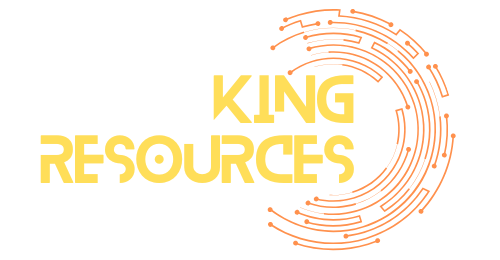Dreaming of a cozy cabin in the mountains or a sunny beachside bungalow? Second home funding might just be your golden ticket to that getaway paradise. Imagine sipping coffee on your private deck while the world rushes by. Sounds tempting, right? But before you pack your bags, it’s crucial to navigate the ins and outs of financing that dream retreat.
Table of Contents
ToggleOverview of Second Home Funding
Second home funding refers to various financing options available for purchasing a vacation or getaway property. Many prospective buyers explore mortgages, home equity loans, and cash purchases to fund their second homes. Each option presents unique advantages and considerations.
Conventional mortgages often serve as a popular choice. These loans typically require a down payment ranging from 10% to 20%. Interest rates may differ from primary residence loans, frequently being slightly higher due to the increased risk lenders associate with second homes.
Home equity loans become an alternative approach. Homeowners can utilize the equity in their primary residences for financing. Lenders generally provide these loans based on the amount of equity available, allowing homeowners to borrow against their primary property’s value.
Cash purchases generate a straightforward option for those with sufficient funds. Buying a second home outright eliminates mortgage payments and interest, leading to potential savings over time. This option often allows buyers to negotiate more favorable terms with sellers.
Additional financing methods include portfolio loans and private lenders. Portfolio loans enable banks to retain ownership of loans rather than selling them on the secondary market. This flexibility sometimes results in more lenient lending standards. Private lenders can offer various terms without traditional requirements.
Buyers should carefully evaluate each funding option. Personal financial situations and long-term goals will influence the best choice. Understanding the nuances of second home funding ensures clearer decision-making.
Types of Second Home Funding Options

Understanding the available second home funding options is crucial for prospective buyers. Different financing methods cater to various needs and financial situations.
Conventional Loans
Conventional loans serve as a popular choice for second home purchases. Typically, lenders require a down payment between 10% and 20%. Higher interest rates may apply due to the perceived risk for lenders. Buyers often need a solid credit score and stable income to qualify for these loans. This financing option provides flexibility, allowing homeowners to secure equity in their second properties while still maintaining their primary home.
FHA Loans
FHA loans offer an alternative for buyers interested in second homes. These loans generally feature lower down payment requirements, often as low as 3.5%. Even though FHA loans are more commonly used for primary residences, they can sometimes be applied to second homes under specific conditions. Applicants will still need to demonstrate creditworthiness and meet income guidelines. This option might appeal to buyers seeking to minimize their initial investment while still achieving their goal of owning a second property.
Qualifying for Second Home Funding
Understanding qualifying criteria is essential for securing second home funding. Buyers must pay attention to specific factors such as credit scores and debt-to-income ratios.
Credit Score Requirements
Lenders typically require a solid credit score for second home mortgages. Most conventional loans expect a minimum score of 620, though higher scores, above 740, often lead to better interest rates. Individuals with lower scores can face higher borrowing costs and stricter terms. Limitations also exist for FHA loans, where the standard credit score requirement remains around 580 for a lower down payment. It’s crucial for buyers to check their scores and take steps to improve them prior to applying for funding.
Debt-to-Income Ratios
Debt-to-income ratios, or DTI, play a significant role in qualifying for a second home. Lenders generally prefer a DTI below 43% to ensure buyers can manage mortgage payments alongside existing debts. Calculating this ratio involves combining monthly debt payments with gross monthly income. Generally, lower DTI ratios enhance approval chances and may yield better loan terms. Buyers should analyze their financial landscape and work towards reducing debt before seeking funding for a second property.
Benefits of Second Home Funding
Second home funding offers numerous advantages for buyers seeking additional properties. One significant benefit includes the opportunity for rental income. Renting out the second home can create a steady cash flow, helping cover mortgage payments or property maintenance expenses.
Tax deductions represent another attractive aspect. Mortgage interest and property taxes on second homes may qualify for deductions, providing potential savings during tax season. Buyers should consult a tax professional to understand eligibility regarding specific deductions.
Appreciation potential holds great importance in real estate. Many properties appreciate over time, often yielding owners substantial returns when they decide to sell. Those investing in areas with high demand can experience significant value increases.
Diversification of investment portfolios is crucial. Owning a second home adds variety to an investor’s portfolio, minimizing risk associated with relying solely on traditional asset classes. Exposure to real estate can help stabilize overall investment performance.
Flexible usage adds to the appeal of second home ownership. Homeowners can designate personal time in their second properties, facilitating family vacations or weekend getaways. This flexibility fosters a lifestyle that encourages relaxation and adventure.
Building equity provides financial security. Each mortgage payment contributes to increased equity, enhancing a homeowner’s financial position. Over time, this equity can be tapped into for unforeseen expenses or future investment opportunities.
Access to financing options improves affordability. Multiple funding avenues, such as conventional loans or home equity loans, allow buyers to find solutions that align with their financial situations. Exploring these options maximizes chances of securing the desired property.
Understanding these benefits empowers potential buyers. Awareness of the financial and lifestyle advantages presented by second home funding encourages informed decision-making.
Challenges in Securing Second Home Funding
Purchasing a second home presents several challenges. Lenders often impose stringent requirements on financing options. Most conventional mortgages demand a down payment of 10% to 20%, which can strain budgets. High-interest rates might also deter potential buyers due to increased risk. For those considering home equity loans, existing equity in primary residences plays a crucial role. Homeowners must evaluate whether they qualify based on their current financial obligations.
Securing approval hinges on specific credit score thresholds. Many lenders expect a minimum credit score of 620 for second home mortgages. Without a score above 740, buyers might face unfavorable interest rates. Investors looking at FHA loans may find these options limited, as such loans cater primarily to primary residences, often with lower down payment requirements. Even with a minimum score of 580, the path to funding can still be challenging.
Debt-to-income (DTI) ratios remain critical. Lenders typically favor a DTI below 43% to ensure mortgage affordability alongside other debts. Struggle arises when buyers find themselves nearing or exceeding this threshold. Improving credit scores and reducing debt consistently leads to better financing opportunities. Engaging with financial advisors strengthens understanding of these complexities.
Navigating the second home funding process can feel overwhelming. Buyers must weigh the allure of rental income against monthly payment responsibilities. Property management adds another layer of complexity for those who plan to rent. The potential for tax deductions and property appreciation offers incentive, but these benefits come with additional responsibilities. Understanding these challenges ensures buyers make informed decisions when seeking second home funding.
Owning a second home can be a rewarding investment and a personal retreat. By exploring various funding options and understanding the associated requirements, potential buyers can navigate the complexities of securing financing. It’s crucial to assess personal financial situations and long-term goals before committing to a purchase.
With the right approach, second home funding can open doors to new opportunities. Whether it’s enjoying family vacations or generating rental income, the benefits can be significant. However, being aware of the challenges and preparing accordingly will ensure a smoother journey toward achieving that dream getaway.









